I’ve been dabbling in almost everything outdoors for about a dozen years–rock and ice climbing, backpacking, mountaineering, hiking, mountain biking, bike touring, bikepacking, car camping, trail running, skiing, rafting and kayaking–and that’s included plenty of hours of getting wet, cold and tired in the process.
What I haven’t done in a long time is start from zero and buy all the basic gear I’d need to start dabbling in the outdoors. But I thought, Wouldn’t I, 13 years ago, have liked some guidance? So I put together a list. None of this is sport-specific gear, just all-around things that can get you places. If you want to go climbing, you’ll need a rope, and if you want to go mountain biking, you’ll need a bike (and a helmet), and so on. But this is a pretty good start for any hiking/backpacking/car camping/peak bagging adventure, spring through fall.
Backpacks: 30-liter and 60-liter
For most weekend-warrior trips, these two sizes will work great. A 30-liter pack will more than fit the layers, food and water you need for a day hike, and even if you’re out for a day of rock climbing, it should fit all your stuff (including a trad rack and/or rope). I’ve used a bunch of packs over the years, but I’m currently using the Osprey Talon 33.
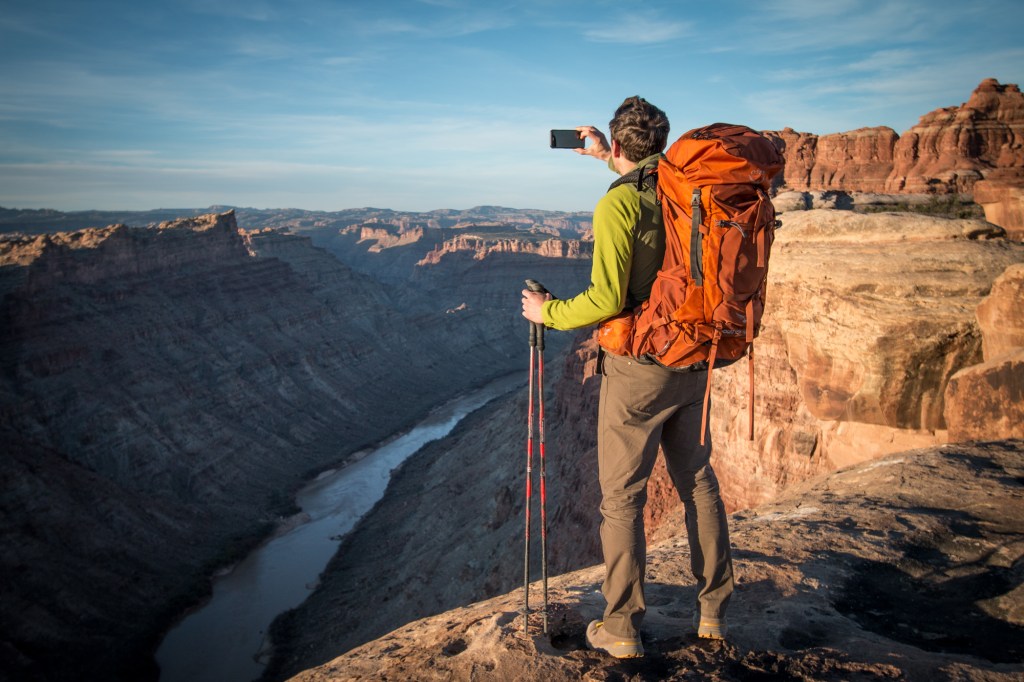
A 60-liter pack should be large enough for most two-day to five-day backpacking trips, and should even stretch up to seven days–unless you’re carrying a bear canister or carrying the whole tent yourself. I have humped some heavy-ass packs, and for me, the undisputed load-carrying champion of the world is my Osprey Aether 60 AG EX, which I have loaded up with 40 and 50 pounds on a couple multi-day trips and been pleasantly surprised. Here’s the women’s version: Osprey Ariel 65 AG EX.
Rain Jacket
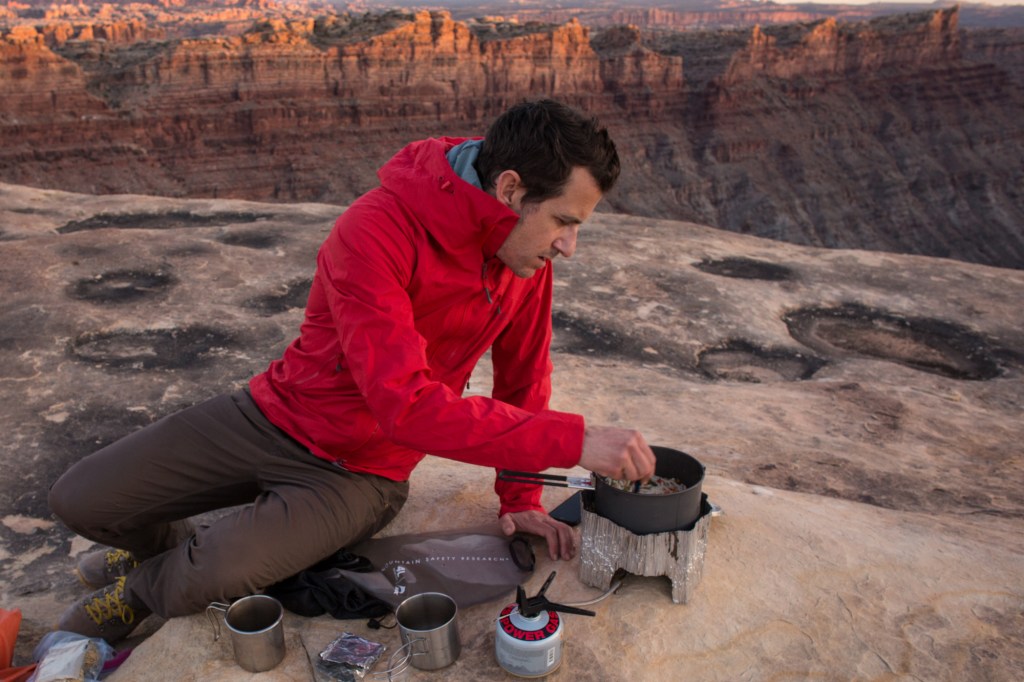
I never go anywhere without a rain jacket in my pack. And if you don’t hit rain, you may find yourself on the side of a peak getting blasted by cold winds–in which case a rain jacket is your best wind-blocking friend. Generally the higher in price you go for a good waterproof, breathable jacket, the more lightweight and breathable the membrane is. I’ve been lucky enough to have some version of the Outdoor Research Axiom jacket since 2013, and have never been let down (it even works as a ski shell if you’re OK skiing without a powder skirt). Check out the women’s version: Outdoor Research Clairvoyant jacket.
It’s pricey, but to me, worth it. If you’re looking to spend way less, I like the Outdoor Research Helium II (which I always keep in my bike commuting bag). Find the women’s version here: Outdoor Research Helium II jacket.
Lightweight Soft-Shell Jacket
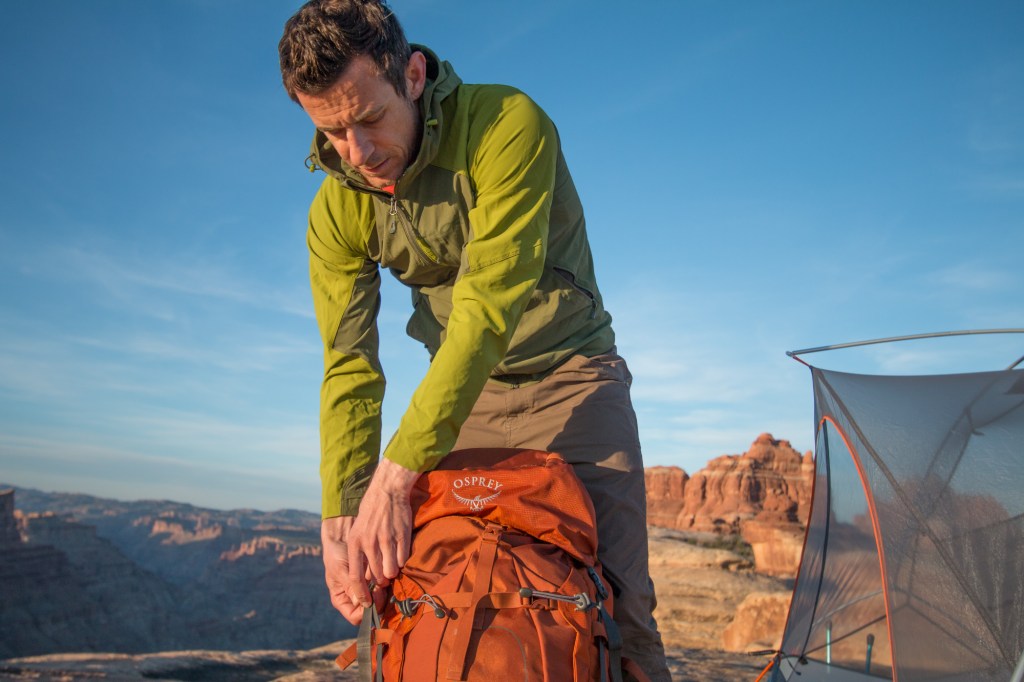
A lightweight soft shell can be your best friend in the mountains, warding off morning chill and summit wind. It’s ideal for multipitch climbing when you’re alternating the hard work of leading with chill-inducing belay stops. The first piece of Outdoor Research gear I bought back in 2011 was a Ferrosi hoody (women’s hoodie), and I’ve had one in my pack on every outing ever since.
Puffy Jacket
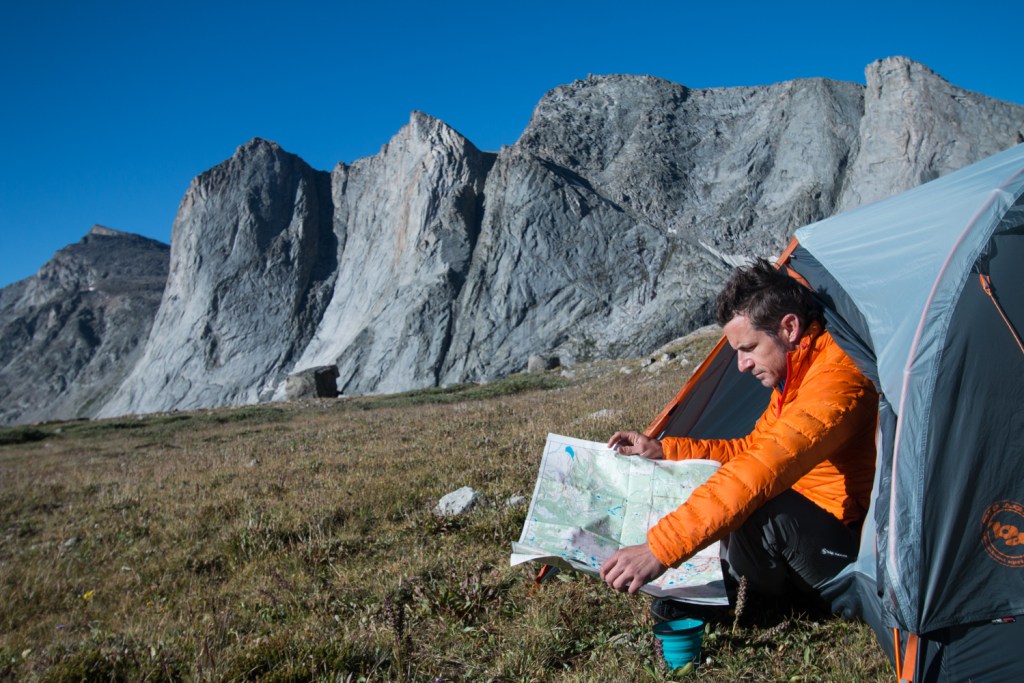
Nothing beats down for compressibility and warmth. If you gave me the choice of having a campfire every night on a backpacking trip or taking a puffy jacket, I would always choose the puffy. I have a couple in my closet, but spring through fall I’m wearing a down sweater-style jacket, a little lighter than the full-on Michelin Man jacket you’d wear ice climbing. I’ve been relying on the Outdoor Research Transcendent Down hoody since 2012 for spring and fall trips anywhere and summer trips in the mountains; and it doubles as a pillow backpacking. Shop the Outdoor Research Verismo Hooded Down jacket.
Headlamp
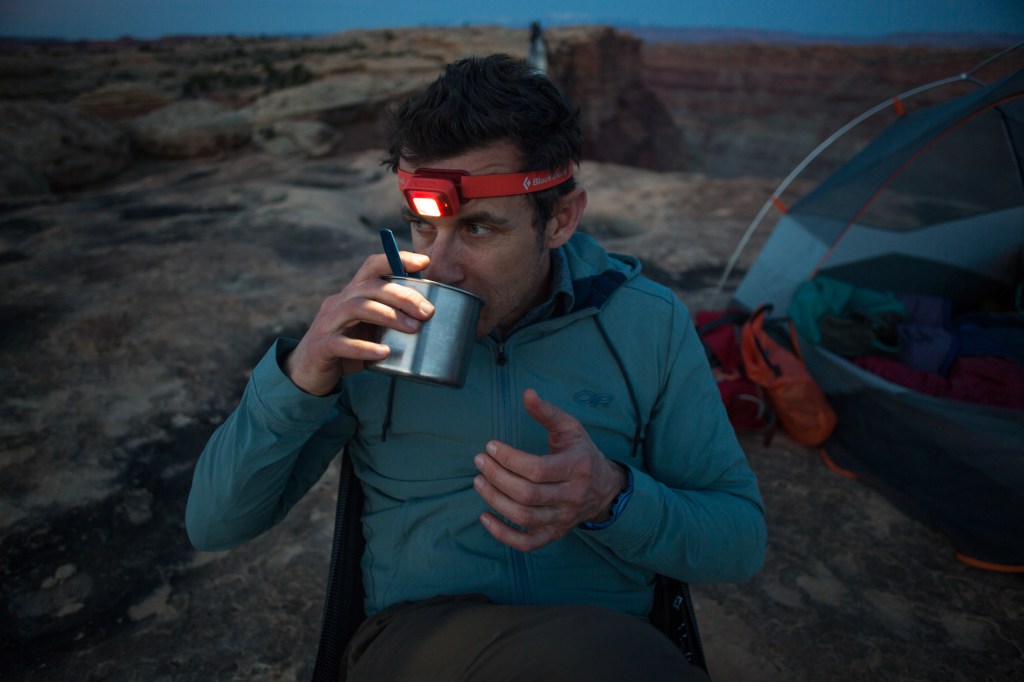
When it gets dark, the best place to have a light is on your head, because it points where you’re looking and keeps your hands free. I was a little skeptical of USB-rechargeable headlamps when they first came out, but I’ve fully converted and don’t use anything else on any trip. My current headlamp for everything but night biking is the Black Diamond Iota, a minimalist USB-rechargeable model.
Water Bottles
Unless you keep all your adventures short enough that you don’t get thirsty (which would be quite boring), you’re going to need to carry some water. So get some water bottles, whatever kind, totaling around 64 ounces for most day-long trips. I like Klean Kanteen bottles.
Water Reservoir
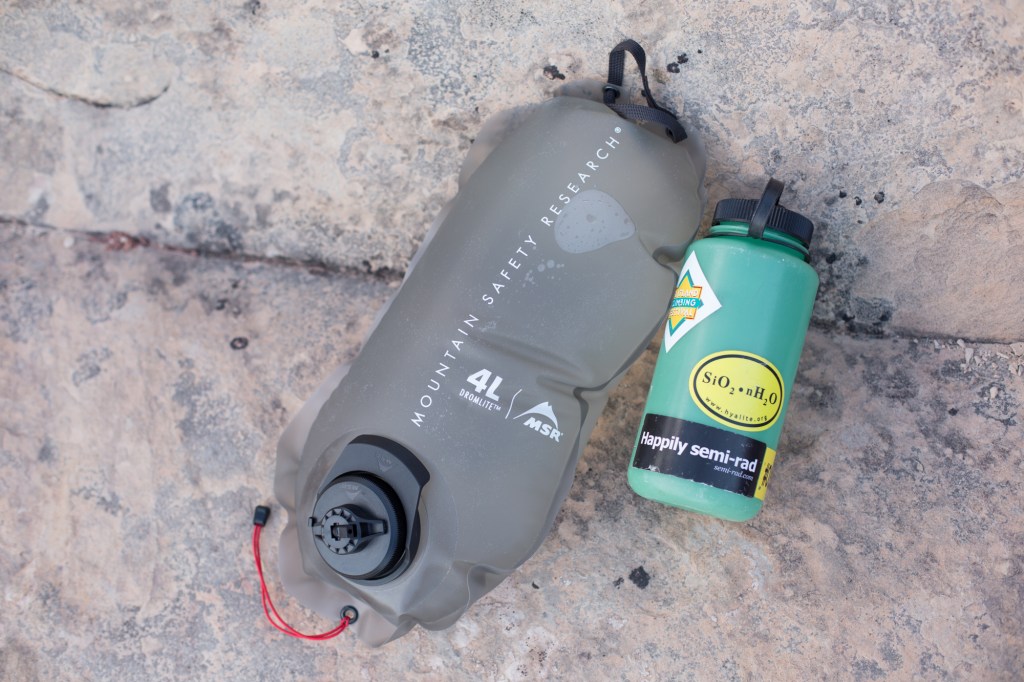
I was a late convert to carrying a reservoir with me on long trips, but I’ve totally committed. Now, for a multiday trip, I’ll take a single water bottle [the big 40-oz. size?] and a 4-liter MSR DromLite in my pack, filled with the rest of my water so I can keep refilling my handheld water bottle with it. In the mountains, I’ll carry an extra liter or two in the reservoir, and in the desert, I’ll carry an extra four liters if water sources are scarce. And it’s handy to use to fill cooking pots with for breakfast and dinner.
Stove
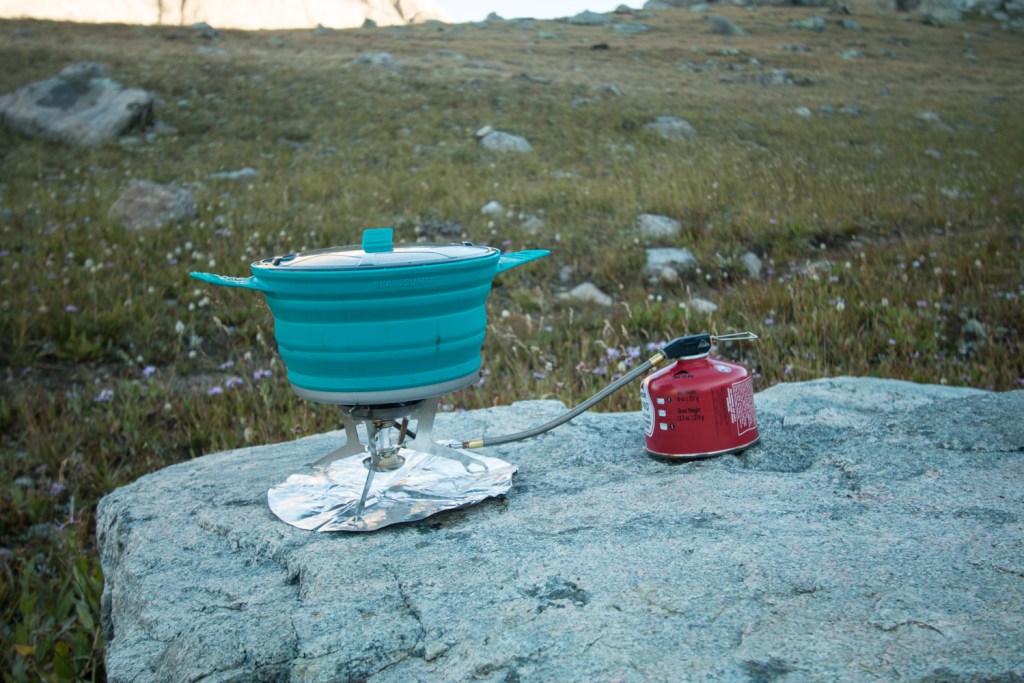
If you only have the budget for one stove, you should get a small backpacking stove. You can use it for car camping, but you can’t haul a big two-burner camp stove backpacking. (Well, you could, but you would be miserable.) I have been using an MSR WhisperLite Universal for all my trips since 2014 and love it. It runs on both canister gas and white gas, and when traveling, if you can’t find one of those types of gas, you can switch the stove over to run on the other.
Trail Running Shoes
Unless you need lots of ankle support or totally waterproof uppers, you can hike and run in trail running shoes. Hiking boots you can hike in, but they’re not much fun to run in. So if I can only buy one type of shoes, give me trail runners. I’ve run ultramarathons, done day hikes and rock climbing approaches, and gone on 10-day off-trail backpacking trips in non-waterproof trail runners. My current favorites are the Hoka One One Challenger ATR 3, which are also available in a women’s version.
Backpacking Tent (2-person)
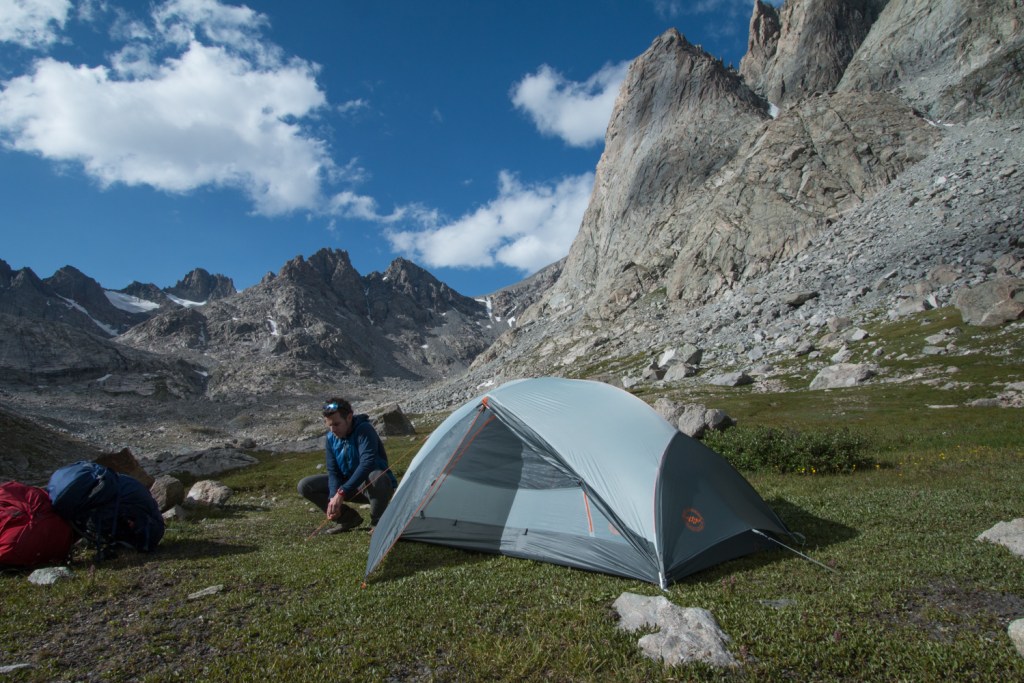
If you can only buy one tent for both car camping and backpacking, make it a backpacking tent. I’ve been extremely happy with my Big Agnes Copper Spur UL 2 mtnGLO tent since 2014, in the mountains and desert on backpacking trips, and stripped down to just the fly and footprint on bikepacking trips.
Sleeping Bag (15- or 20-degree)
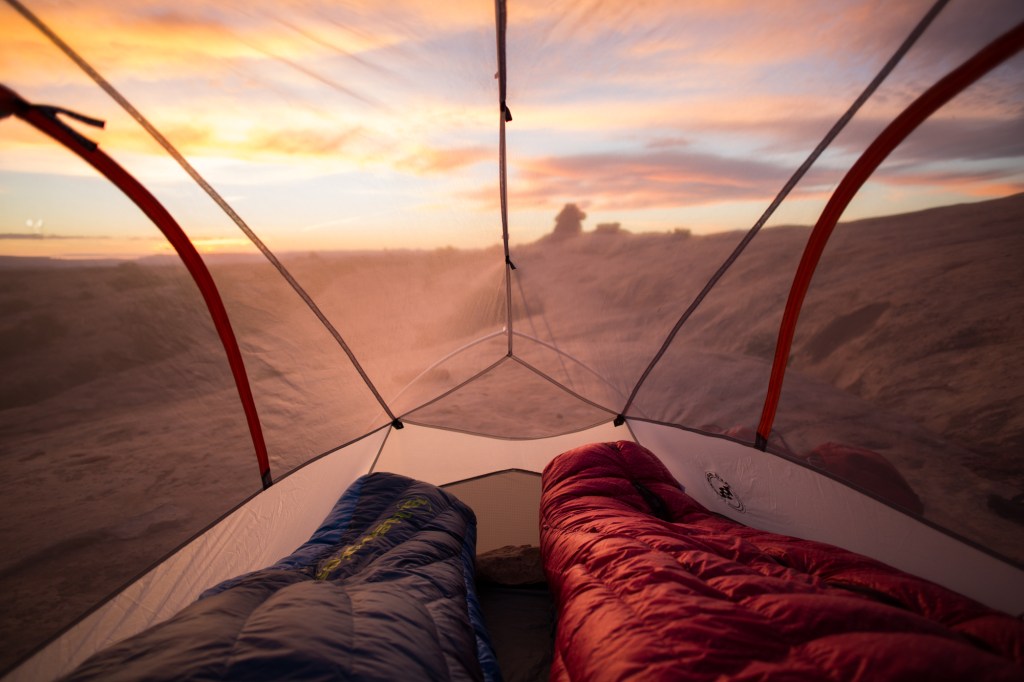
A solid EN-rated bag in the 15- to 20-degree Fahrenheit range is good for most three-season camping trips (you’ll probably want something rated 0 degrees F or lower for winter camping trips). I’ve been very excited about water-repellent down for the past four years, and just replaced my old Big Agnes sleeping bag with a new Big Agnes Skeeter SL 20, with 650-fill DownTek water-repellent down–and I’ve been very pleased so far. A slightly warmer women’s version is the Big Agnes Hazel 15 Sleeping bag.
Sleeping Pad
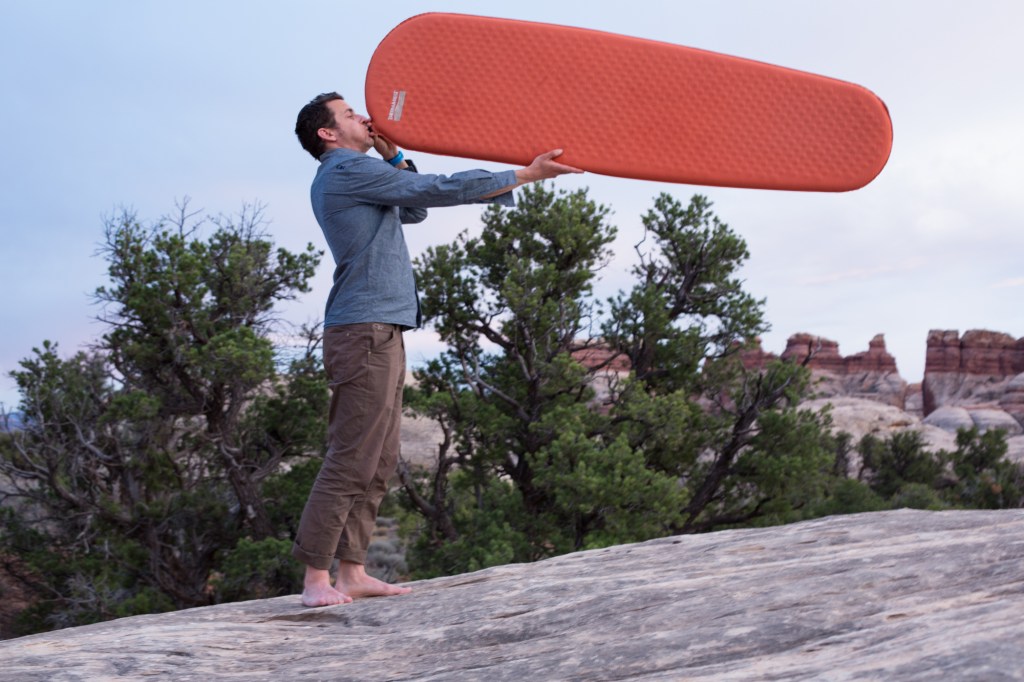
If you’re camping, you’ll need a sleeping pad, unless you actually just don’t like sleeping. I realize sleeping pads have come a long way in the past few years, but I’m still clutching my old reliable Therm-a-Rest ProLite Plus, which is a little thinner than today’s air pads, but it’s never let me down yet.
